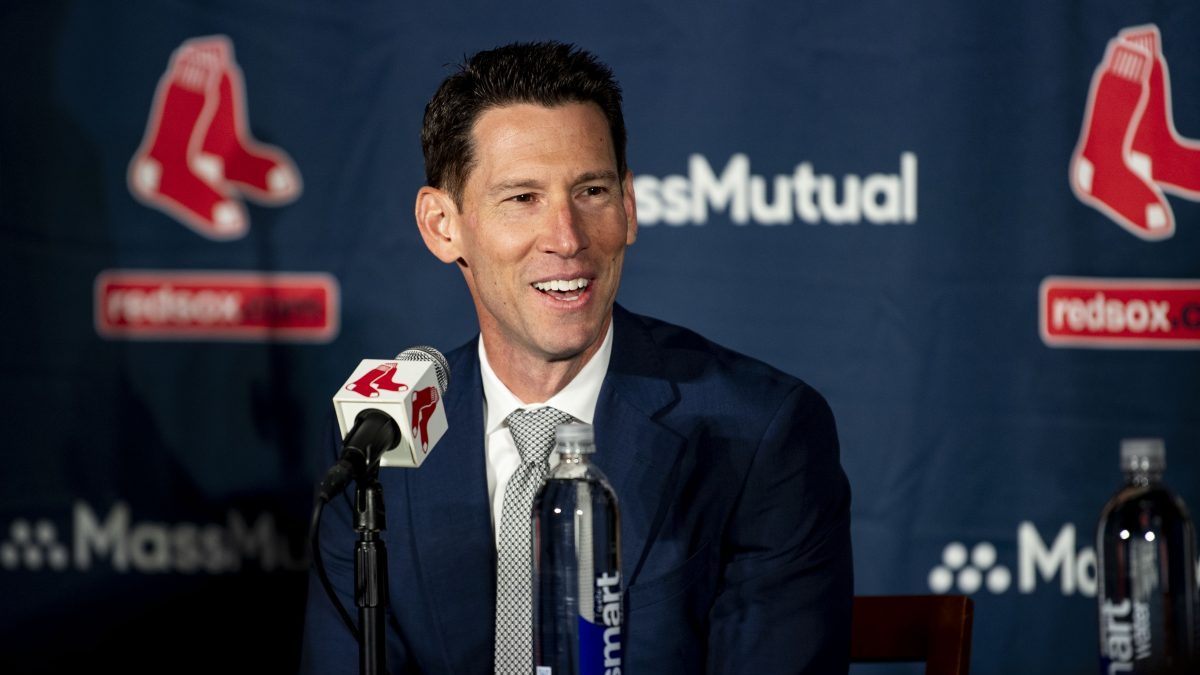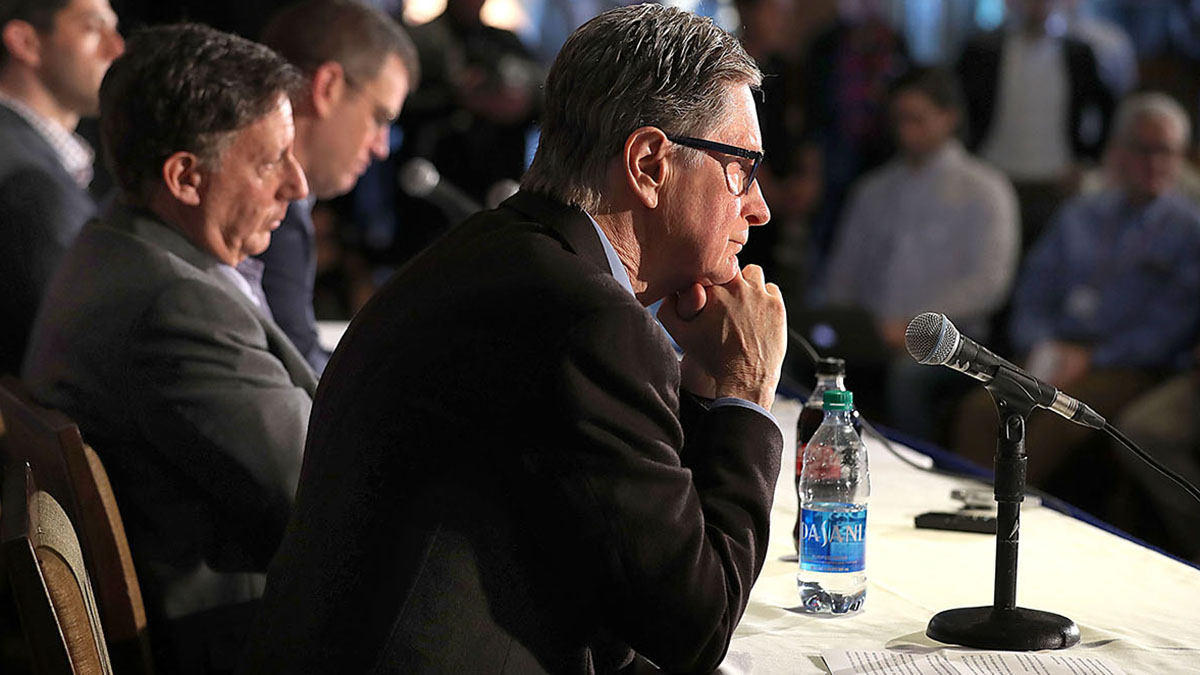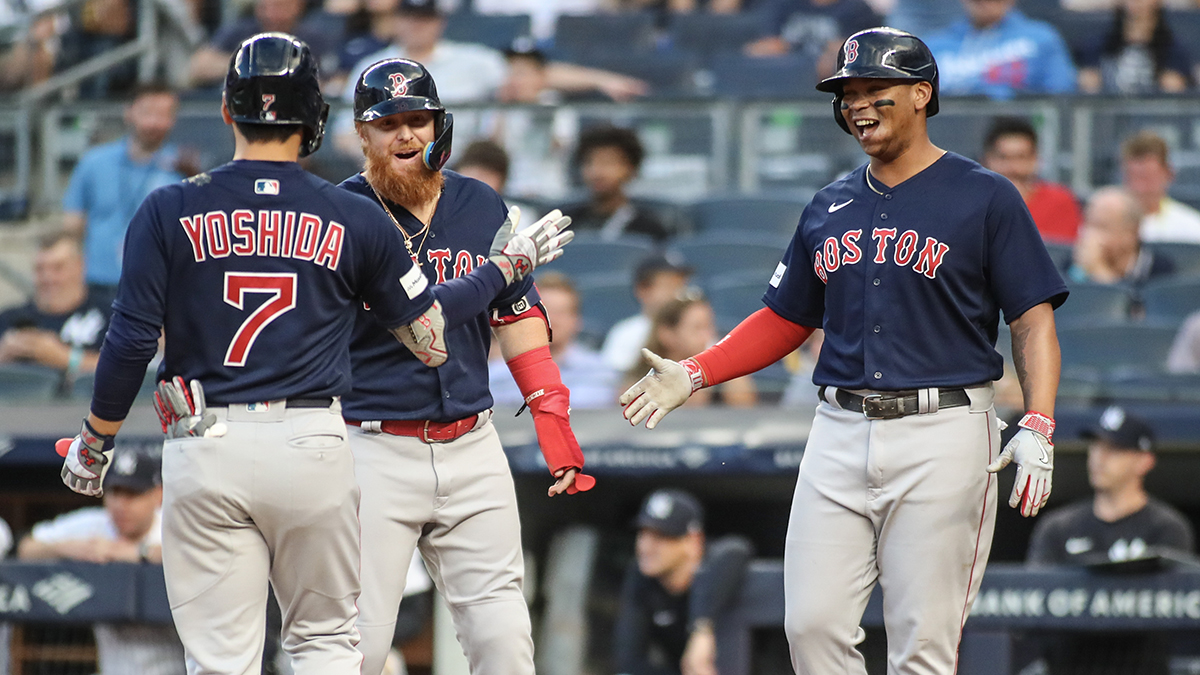Lucas Giolito may very well be part of a successful Red Sox offseason, but that's only if you believe more impactful moves are coming.
And what have John Henry and Co. done over the last five years to deserve that faith?
If this is what full throttle looks like, it's time for new wheels. An offseason that started with dreams of Yoshinobu Yamamoto has now considerably downshifted to Giolito, another wild card in a rotation full of them.
Stay in the game with the latest updates on your beloved Boston sports teams! Sign up here for our All Access Daily newsletter.
The Red Sox reportedly agreed to a two-year, $38.5 million deal with the former All-Star right-hander on Friday, and as far as bounce-back candidates go, he's a decent one. A terrible second half and freakishly improbable home run numbers (41?!) doomed his overall campaign, but we're still talking about a reliable innings-eater who received down-ballot Cy Young votes as recently as 2021.
There's value in that, but Red Sox fans can be forgiven for thinking, "Here we go again." After all, with holes in the rotation every winter for the last five years, the Red Sox have pursued a parade of interchangeable veterans on short-term deals, from Martin Perez to Garrett Richards, Michael Wacha to Corey Kluber, James Paxton to Rich Hill.
Some of them hit, kinda. Most of them simply departed to make room for the next retread. At 29, Giolito has the highest upside of the bunch, but it still feels like more of the same, except at quadruple the price.
MORE RED SOX COVERAGE
And it's not like he's guaranteed to return to form. He's 19-24 with an ERA pushing 5.00 over the last two years, a fall from grace that easily cost him at least $100 million in free agency. His strikeout rate has dipped, his home run rate has soared, and he wouldn't be the first starter to lose it in his late 20s, never to return.
Regardless, the Red Sox shouldn't be constructing their roster with Giolito's best-case scenario in mind, but the most likely one, which is that he'll eat innings at the back of their rotation while posting a 4.50-plus ERA, which only makes him a marginal upgrade over Paxton, the man he's effectively replacing.
It's a move that leaves us in limbo, unsure of how it fits the greater whole, a state of being that defines this entire offseason.
We can't properly evaluate the Giolito signing until the Red Sox finish building their rotation, though they're reportedly out on top-of-the-market guys like World Series winner Jordan Montgomery and Cy Young winner Blake Snell, which feels like a missed opportunity in the case of the former, especially, since signing Montgomery for six years could solve the now problem and the later problem that the Red Sox are prioritizing. They're not looking for short-term fixes, but rather pitchers they can still rely on when they're contending again in the next three (five? seven? 100?) years.
Oddly enough, Giolito doesn't actually fit that model, since his contract includes an opt-out next fall that could make him a one-and-done if he returns to form. Because he was traded during the season, the Red Sox didn't lose a draft pick to sign him, so they'd only be out money, but the structure of the deal does allow the possibility of Giolito sending them back to the market for another arm next year.
So what comes next? There's persistent talk of the Red Sox trading an outfielder to obtain a cost-controlled starter, but you tell me what they should expect to receive for Masataka Yoshida (wore down, can't play defense, doesn't hit for power), Jarren Duran (flash in the pan?), Wilyer Abreu (76 lifetime at-bats), Ceddanne Rafaela (swings at everything, may never hit), or the recently acquired Tyler O'Neill (platoon player).
Are any of them going to form the heart of a package that convinces the Marlins to part with young lefty Jesús Luzardo or Seattle to say goodbye to righty Logan Gilbert?
If not, they'll need to hit on a mid-market free agent option like Paxton, who fizzled in the second half, or Japanese right-hander Shōta Imanaga. The problem with this approach is that it doesn't address their most glaring need, which is a top-of-the-rotation arm to compete in a loaded division.
The Orioles won 100 games last season and the Rays 99, the Jays boast one of the deepest rotations in baseball, and the Yankees just added Juan Soto to their lineup. A rotation of fourth and fifth starters in front of a wretched defense and middle-of-the-pack lineup is a recipe for another last-place finish.
So forgive me for not doing cartwheels over the Red Sox scoring the biggest bounce-back candidate of the offseason. They desperately need help atop their rotation, not at the bottom.



